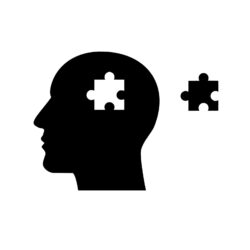Breakthrough Solutions for Chronic Pain and Injury
In this article, we delve into breakthrough solutions for chronic pain and injury, a challenge faced by 100 million Americans. We explore innovative medical, surgical, and holistic approaches, the impact of lifestyle modifications, and the complex arena of health coverage. Our aim is to provide a comprehensive, evidence-based guide to empower individuals with the knowledge to navigate their unique journey towards effective pain management and improved quality of life.

Key Takeaways
- Seek help from trusted doctors and professionals, such as psychiatrists or social workers, to address chronic pain and injury.
- Take medications responsibly and keep a medication log to track their effects.
- Explore non-pharmacological treatments like exercise plans, massage therapy, and alternative therapies.
- Consider lifestyle changes, such as diet modifications, quitting smoking, and exploring cannabis for pain relief.
Understanding the Nature of Chronic Pain and Injury
In our ongoing exploration of chronic pain and injury, we must acknowledge that understanding its intricate nature is fundamental to managing its impact on our daily lives. Modern medicine has made strides in exploring alternative treatments that can provide relief. Acupuncture, physiotherapy, and even holistic approaches have proven beneficial for many. Simultaneously, the role of technology in pain management cannot be understated. Technological advancements have empowered patients with tools to monitor and manage their pain, such as with biofeedback and virtual reality therapy. These tools, alongside traditional treatments, provide a comprehensive approach to pain management. Research continues to evolve in this area, promising a future where chronic pain can be managed more effectively and less invasively.
Exploring Advanced Medicinal Approaches
Several advanced medicinal approaches, such as the use of biotechnological innovations and gene therapy, are currently under rigorous examination for their potential to revolutionize chronic pain management. These advanced medicinal treatments leverage cutting edge technologies to alleviate debilitating conditions. Biotechnological advances allow for the development of targeted drugs with fewer side effects, while gene therapy explores the potential of altering the patient's genetic makeup to eliminate or reduce the source of the pain. The use of stem cell therapies is another avenue being explored, with the potential to repair damaged tissues. While still in their infancy, the potential of these treatments is promising. They signify a paradigm shift in chronic pain management, moving away from symptom management towards addressing the root cause of the pain.
The Role of Physical Therapy in Chronic Pain Management
Often overlooked, physical therapy plays an integral role in managing chronic pain by promoting mobility, decreasing pain, and restoring function. The effectiveness of physical therapy in chronic pain management is well-documented. It utilizes a multimodal approach that includes exercises aimed at strengthening the body's core muscles, improving flexibility, and promoting better posture. This not only provides immediate relief but also prevents future episodes of pain.
Furthermore, integrating physical therapy and medication for pain relief has proven to be a highly effective strategy. While medication primarily addresses the physiological aspect of pain, physical therapy works on the functional level. This holistic approach ensures that all aspects of the patient's pain are addressed, leading to a more comprehensive and lasting resolution. Therefore, physical therapy should be considered a cornerstone in chronic pain management strategies.
Breakthrough Techniques in Pain Reduction
Over the past decade, five novel techniques have emerged as potential breakthroughs in the field of pain reduction, offering new hope for countless patients suffering from chronic discomfort. These techniques, rooted in advanced technology in pain relief, include neurostimulation, radiofrequency ablation, ultrasound therapy, regenerative medicine, and digital health platforms. The breakthrough discoveries in pain science have redefined our understanding of pain perception and management. Neurostimulation, for instance, uses electrical signals to alter nerve activity, reducing pain sensations. Radiofrequency ablation uses heat to minimize nerve function in painful areas. Ultrasound therapy stimulates healing, while regenerative medicine promotes tissue repair, targeting the root cause of pain. Digital health platforms allow for personalized, remote pain management, making these progressive treatments accessible to a wider audience.
The Impact of Diet and Nutrition on Chronic Pain
Why, amidst the various pain management strategies, is the impact of diet and nutrition on chronic pain often overlooked, and how can these dietary changes potentially alleviate the suffering of individuals living with chronic pain conditions? Many people underestimate the role of diet and nutrition in managing chronic pain. Inflammation, a pivotal factor in chronic pain, can be influenced by our dietary choices. Consuming anti-inflammatory foods and avoiding pro-inflammatory ones can potentially mitigate pain. Nutritional supplements for pain management, such as Omega-3 fatty acids, Vitamin D, and Magnesium, have shown promising results in reducing inflammation and pain. Hence, a strategic dietary plan, complemented with appropriate nutritional supplements, can be an effective, non-invasive tool in managing chronic pain, warranting further investigation and public awareness.
The Role of Mental Health in Pain Management
While the role of diet and nutrition in managing chronic pain cannot be understated, it is equally crucial to acknowledge that mental health plays a significant part in pain management, as psychological factors can influence the perception and experience of pain. The intersection of mental health and chronic pain management is increasingly recognized, with research indicating that depression and anxiety can exacerbate the severity and duration of pain. Integrating mindfulness practices in pain management, including meditation and cognitive behavioral therapy, can significantly improve patient outcomes. These practices foster a greater awareness of the body, helping patients distinguish between the physical sensation of pain and the emotional distress it triggers. Consequently, improving mental health can provide a comprehensive approach to chronic pain management.
New Approaches in Alternative and Holistic Therapies
In the realm of chronic pain management, new and innovative approaches in alternative and holistic therapies are being explored, and these options offer promising possibilities for patients who haven't found relief through traditional methods. Increasingly, practitioners are integrating non-pharmacological interventions into their treatment plans, utilizing techniques such as acupuncture, massage therapy, and mindfulness meditation. Research evidence supports these holistic therapies as effective in managing chronic pain, reducing reliance on medication, and enhancing overall well-being. For instance, a study by the National Center for Complementary and Integrative Health showed that mindfulness meditation can help ease chronic pain. Another research indicated that massage therapy can significantly reduce pain intensity and improve physical functioning. These breakthrough solutions underscore the importance of a comprehensive, patient-centered approach to chronic pain management.
Innovative Surgical Solutions for Chronic Pain
Over the past decade, innovative surgical solutions have become increasingly prevalent in the field of chronic pain management, offering new hope for patients living with persistent discomfort. Advanced surgical techniques, such as neurostimulation and intrathecal drug delivery systems, are transforming the landscape of pain treatment. These techniques provide targeted pain relief, reducing the need for systemic pain medications and their associated side effects. Furthermore, the advent of non invasive pain relief methods, including transcutaneous electrical nerve stimulation (TENS), offers patients a viable alternative to more invasive procedures. Recent research substantiates the efficacy of these approaches, underscoring their potential in enhancing patient outcomes. The continual development and refinement of these techniques promise a future with more effective and personalized solutions for chronic pain.
The Influence of Lifestyle Changes on Pain Management
Through the implementation of lifestyle changes for pain management, such as dietary adjustments and the cessation of smoking, patients can experience significant reductions in chronic pain, and concurrently, improvements in overall health and well-being. The impact of exercise on pain management is considerable; a regular, tailored exercise regime can enhance mobility and diminish pain intensity. Furthermore, the role of mindfulness in chronic pain relief is increasingly recognized. Mindfulness, a form of meditation which cultivates a focused awareness on the present moment, has been found to assist in managing pain by altering pain perception and reducing associated distress. From dietary changes to exercise and mindfulness practices, embracing these lifestyle modifications has shown to be a comprehensive, effective approach in managing chronic pain.
Navigating Insurance and Health Coverage for Chronic Pain Treatment
Understanding your insurance company's policies for chronic pain treatment is crucial, but patients must also consider their personal budget constraints and the potential out-of-pocket costs. Navigating insurance for health coverage can be complex, especially when seeking advanced medicinal approaches or physical therapy. These breakthrough techniques may provide relief but, depending on coverage, may entail additional expenses. Equally important are diet and nutrition which contribute to overall health and can mitigate chronic pain. Mental health is another critical aspect often covered in health plans, providing access to therapies that help cope with chronic pain. Alternative therapies and surgical solutions are other options that may be covered. Ultimately, lifestyle changes can significantly impact chronic pain and its management, an important consideration when reviewing insurance plans.
Frequently Asked Questions
What Are Some Non-Conventional Ways to Manage Chronic Pain and Injury?
Alternative therapies such as acupuncture, chiropractic care, and massage therapy are increasingly recognized for their potential in managing chronic pain and injury. Pain psychology, another non-conventional approach, involves cognitive-behavioral strategies that address emotional and mental aspects of pain. Meditation and mindfulness, part of this approach, can significantly reduce pain perception. These methods, while not replacing conventional medical treatment, can provide additional avenues for pain management, contributing to a holistic, patient-centered approach.
Are There Any Mobile Apps Available to Help Track Pain Levels and Medication Use?
Yes, several mobile apps are available to help with pain management and medication tracking. These apps often allow for customization to suit individual needs, providing features like pain journaling. For instance, 'Manage My Pain' helps track and analyze pain levels, while 'Medisafe' assists in medication management. These digital tools facilitate communication with healthcare providers and contribute to a more personalized approach to chronic pain and injury management. Always consult with a healthcare professional before starting new treatments.
What Types of Jobs or Careers Are Less Likely to Exacerbate Chronic Pain and Injury?
When considering careers less likely to exacerbate chronic pain and injury, individuals should consider "pain friendly professions". These typically involve less physical strain and more flexibility. Roles in sectors like technology, counseling, or remote work could be viable options. Adapting workspaces to ensure ergonomic setups can also significantly reduce discomfort. The goal is to create an environment that minimally impacts existing conditions while promoting productivity and wellbeing.
What Role Can a Caregiver or Family Play in Managing a Patient’s Chronic Pain?
Caregivers and family members play a pivotal role in managing a patient's chronic pain. Their involvement can significantly influence pain perception, provide emotional support, and assist with medication schedules. They can also help the patient adopt lifestyle changes to alleviate pain. However, managing chronic pain can cause caregiver stress, hence it's crucial they implement self-care strategies and seek support when necessary. Their well-being is equally important for effective pain management.
How Can Technology and Digital Tools Aid Chronic Pain Management?
Technology and digital tools can significantly aid in managing chronic pain. Virtual Reality Therapy, for instance, provides immersive experiences that can distract the brain and reduce pain perception. Additionally, Telehealth Consultations offer remote access to healthcare professionals, eliminating travel-related stress and facilitating routine check-ups. These tools, combined with traditional pain management strategies, can help create a more holistic and effective treatment plan for individuals suffering from chronic pain.
Conclusion
In conclusion, managing chronic pain and injury requires a multifaceted approach. From advanced medicinal strategies, physical therapy, diet alterations, to innovative surgical solutions, and lifestyle changes, each plays a crucial role in mitigating pain. Open communication with healthcare providers and exploring diverse treatment options are essential. Understanding insurance and health coverage complexities can further aid in obtaining necessary treatments. Through comprehensive, evidence-based strategies, individuals can navigate their unique path towards improved pain management and enhanced quality of life.

This post has been generated by AI and was not reviewed by editors. This is Not legal advice. Please consult with an attorney.




